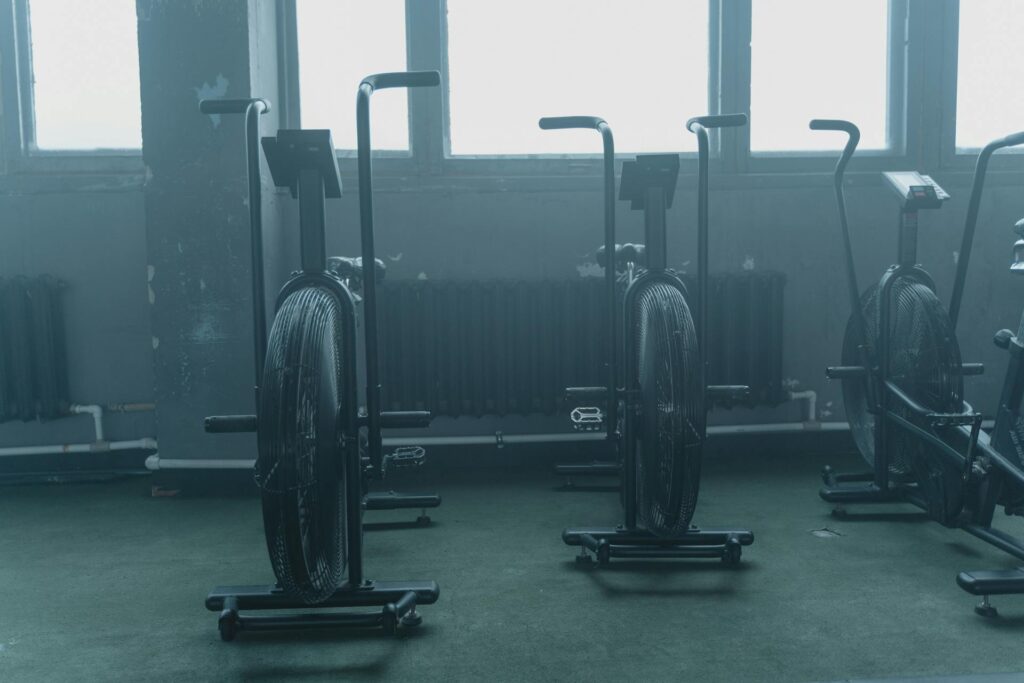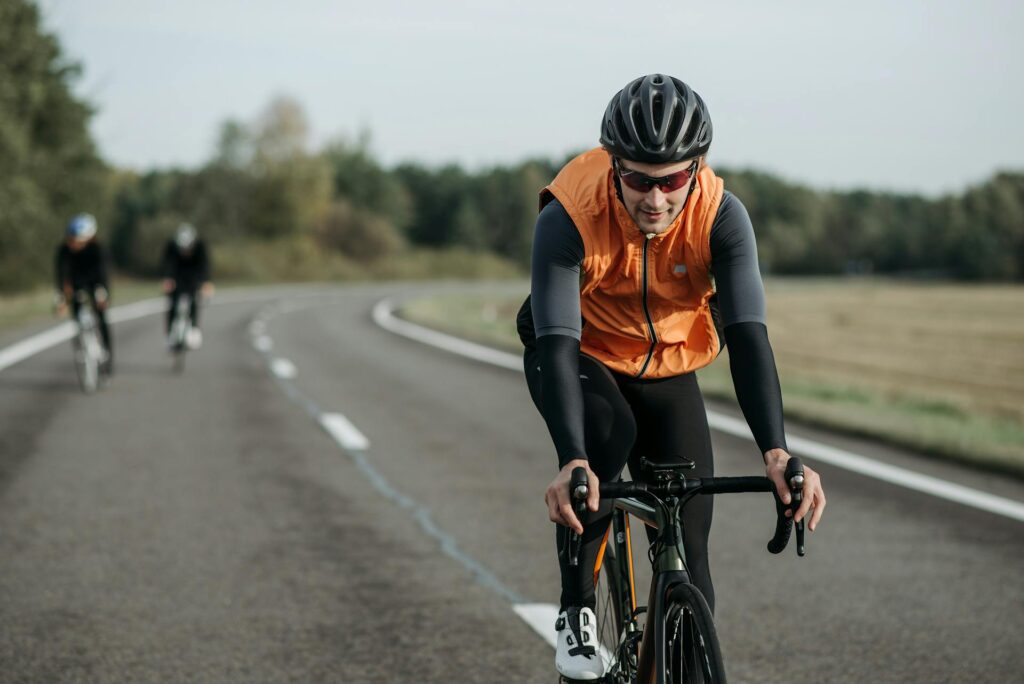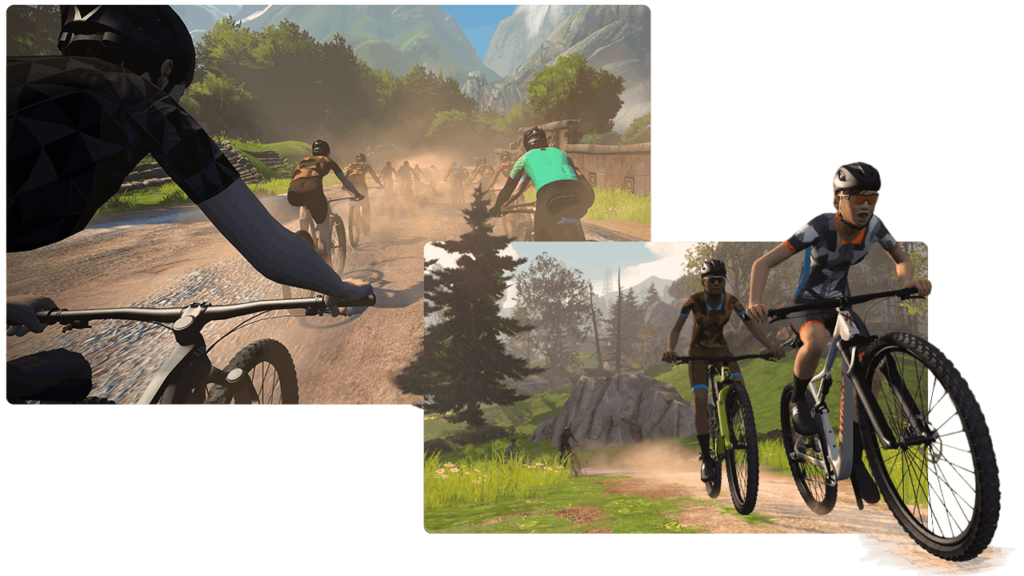As the proverb says, a goal without a strategy is just a desire. You’ll need the plan to assist you in reaching your goals if you have a cycling event or fitness goal in mind for the upcoming summer. Your fitness will probably be the main emphasis of that strategy, and indoor riding is the most effective approach to improving your cycling fitness.
One of the top smart trainers or a smart exercise bike is the foundation of a wonderful indoor cycling setup. These devices can link with companion apps like Zwift and Rouvy, and when used together, they sync the on-screen games with your pedaling power and, more recently, your steering.
You may complete routes, join virtual group rides, compete against real people from across the world, and complete tasks to get badges, and there is an unending supply of entertainment to keep you entertained.
Of course, getting fitter is just one aspect of event preparation. Course recons, fueling and hydration techniques, pacing schemes, and race tactics are just a few of the many other factors that go into it. There are numerous ways that indoor cycling can benefit your event, regardless of whether it is a road, gravel, or mountain bike event.
Not that we’re here to tell you that it’s the only tool you require. Even while it won’t improve your ability to handle your bike or to ride comfortably in a large group, there are still many ways you can benefit from it. Here are six reasons why indoor cycling should be viewed as a component of the entire strategy.
Constant training
Power, or the number of watts you push through the pedals, can be measured by smart turbo trainers and smart bikes dozens of times per revolution. Using apps to assist you in achieving your goals enables you to work out much more wisely.
The finest indoor cycling applications sometimes come with routines and training schedules that you may use. These enable you to assess your fitness using a variety of tests, improve it using specific exercises, and monitor improvement over time using in-depth analytics tools.

These fitness assessments, which typically take the form of an FTP test or ramp test, calculate your power zones, which the app uses to create a customized training schedule and assist you in developing the aspects of your power curve required for your target event, from increasing your endurance for long-distance races to honing your high-effort VO2 Max and “anaerobic” capacity. Some apps even allow you to choose your desired outcome, and they will handle the rest.
Additionally, smart trainers and bikes have an “erg mode” feature that continuously adjusts the resistance so that you must cycle at the required power regardless of your cadence. This implies that your workout will be completed exactly as long as you keep your pedals turning. You can use your app’s environment or watch a movie while exercising.
No need to stop
In light of the preceding, you could say, “But a power meter can measure my power output outdoors, too. “
That is true, and you will develop fitness just as quickly if you can accurately perform the same exercises at the same intensity as indoors. On the other hand, while you’re on the open road, the weather and other drivers are out to get you.

It’s possible that you will be distracted by traffic, the weather, the terrain, and several other elements if you try to follow a power-based training program while doing this. For instance, traffic lights or a hill could shorten a threshold effort or make you work during a rest period.
All of these distractions are absent during indoor training, allowing you to consistently complete your workout. That’s fantastic news because it will eliminate distractions and uncontrollable factors, which will help you advance your fitness more quickly.
Time-saving and efficient training
Indoor cycling is also incredibly effective because it eliminates downtime and allows you to concentrate on every second of your workout on the bike.
Not many of us have the wonderful fortune to reside near a nicely graded section of road that is ideal for your interval training. Most of us need to ride for a long time before we locate a good length of the road, and while that time helps with warm-up and cool-down, it rarely takes place at the ideal distance.
This means that rides frequently include unproductive miles, stop-starting between traffic and intersections, freewheeling down hills, exerting excessive effort up hills, and other problems.
One of the most important things you can do to prepare for your event is mentally prepare, and a significant part of that is doing the course study. This is in addition to practicing for the physical demands of your event. Indoor cycling will never be as effective as physically riding the course outside, but it’s probably not practical unless your event is close to your home.
So why not use technology to your advantage? For instance, Wahoo RGT enables you to upload a GPX file of the course you’re practicing on and recreate it in the virtual environment.
Other apps already include footage of paths taken in the real world. For instance, Rouvy superimposes your virtual self over augmented reality images of hundreds of courses, replicating the distance and elevation.
Furthermore, you can upload the FIT file and recreate the physical demands of the ride based on previous data if you’ve previously used a power meter while riding the course or know someone who has.
Proprioception: A new concept for cycling
If you don’t know what “proprioception” means, there’s no need to worry. As said by ScienceDirect, “proprioception is the sense that lets us perceive the location, movement, and action of parts of the body.”
While riding outside, you probably don’t realize it, yet many novice cyclists have some form of imbalance in their pedaling technique. For instance, one of your glutes might not activate during the downstroke, or one of your knees might sag inward, which would cause the rest of your muscles to overwork to compensate.
When riding inside, you can devote considerable time to concentrating on each leg or each muscle group without worrying about colliding with anything. When riding outside, you must pay attention to where you are going.
To do this while pedaling, observe each leg or muscle area in turn. Verify that your legs are moving correctly up and down and that your muscles are contracting and relaxing as you would anticipate. If you discover a knee that is tracking improperly, set aside time to fix it. For instance, you can monitor your knee for a few minutes at a time during rest times to ensure it tracks properly.
A little proprioception therapy can occasionally develop the neuromuscular pathways to guarantee your muscles fire appropriately, saving energy for your outdoor goal and preventing damage during your training. Sometimes these imbalances are an indication of something more serious.
Indoor aerodynamics
Taking the previous concepts a step further, aerodynamics is another way that monitoring one’s body can help one achieve one’s outdoor goals.
Many top-time trial athletes worldwide have mirrors installed around their indoor cycling equipment so they can constantly check their riding form to make sure it is as aerodynamic as possible.

Place a mirror in front of your indoor bike and, while working out, strive to reduce the size of your frontal silhouette while maintaining comfort and the necessary power.
The components of that sentence are all equally crucial. It is important to strike a balance between an aerodynamic stance, being comfortable enough to maintain the position during the event, and scrunching up so tight that you can’t obtain the oxygen you need to finish the workout.
Controlled environment for different testing
Fueling properly and doing the training are both important for performing well on the bike. Riders frequently overlook the fact that the body functions like an engine and needs fuel to operate at its best.
our legs must feel empty if you’ve ever experienced the deflating sensation of hitting “the wall.” Dehydration can cause your performance to suffer in a similar way.
Carbohydrates are the most effective fuel for our bodies, and research informs us that the average person can consume 90–100 g of them in an hour. However, if you jump on the bike and immediately reach this limit, you’ll almost surely experience gastrointestinal issues. Starting low and gradually raising it is how you “train your gut.”
While all of this can be observed outside, you can easily test your hydration and fueling to see how you react because an inside workout can be precisely recreated using erg mode. You may also weigh yourself before and after to determine the amount of fluid lost through perspiration and learn more about your exercise.
Key takeaways
Cycling outdoors is when the magic happens. You see those 10 km roads to ride through, and you might think it will be a tough one to take on.
However, practicing indoor cycling can help you achieve your goals. You can work on this little by little to achieve great results.
Truth be told, you’d still need to get on the road and put your skills into practice, but practicing before doing it can help you achieve the results you expect!
